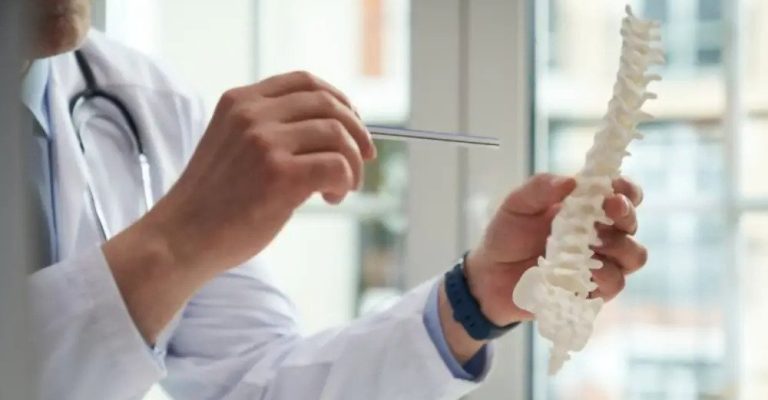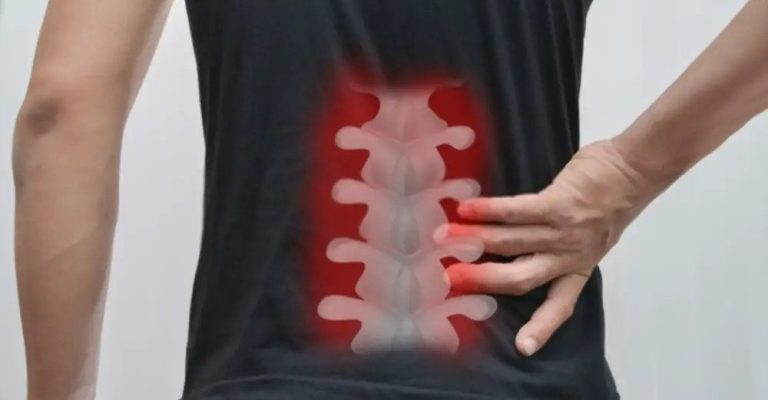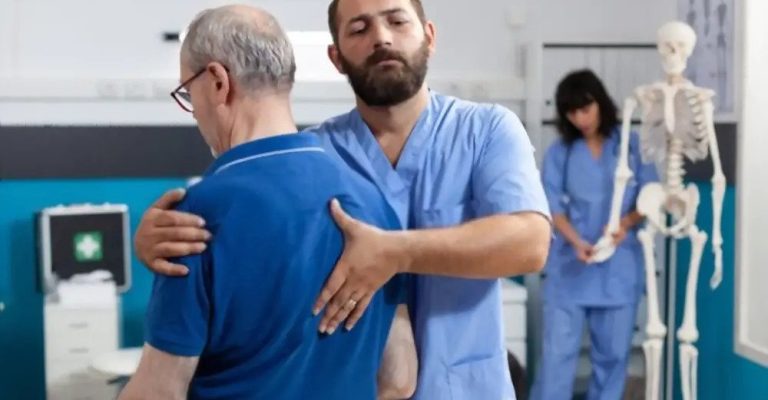
Sacral sparing, or preservation of sensation and movement below a spinal cord injury (SCI) lesion, is a phenomenon that occurs in some individuals with SCIs. Sacral sparing can cause profound physical, emotional, and psychological effects for those who experience it. By understanding the physiology behind why this phenomenon happens, individuals living with sacral sparing after SCI can take proactive steps to manage their condition more effectively.
In this blog post, we will discuss what sacral sparing entails and provide an overview of why it sometimes happens following SCI—with advice on how people can cope with its associated challenges as well.
It is necessary to do an anal examination on a patient with a spinal cord injury to ascertain whether or not the patient has sacral sparing. Your healthcare provider will check bladder control, bowel control, and bladder strength since they are all innervated by the lowest spinal cord segments (S4-S5).
A physician may detect deeper anal pressure by inserting a finger covered with gloves into the rectum and asking the patient in the area where they’re experiencing pressure. Likewise, the physician will examine the patient’s ability to voluntarily contract and relax the anus by inserting a finger wearing a glove into the rectum and requesting the patient to do so.
Autonomic dysreflexia, rectal hemorrhage, and stimulate bowel movements are all potential adverse effects of an anal exam, as well as obvious discomfort and embarrassment. Regrettably, it’s the only certain technique to tell whether sacral sparing has occurred following a spinal cord injury.

Doctors may employ a diagnostic technique called sacral sparing to determine whether a patient has had total or partial spinal cord damage. When there is severe damage to the spinal cord, messages from the brain cannot make it beyond the lesion, affecting all sensory and motor activities down the level of injury.
When a spinal cord injury (SCI) is partial, however, some of the neural connections survive, enabling data to be sent beyond the site of the lesion. Consequently, there’s a better shot of fully recovering function.
The anal muscles are regulated by a spinal cord segment near the spinal column’s base. If you still have this muscle function after a spinal cord injury, it indicates that some nerve fibers connecting your brain to the rest of your body have not yet been severed.
Spinal shock is a common physiological response immediately following spinal cord injury, wherein the patient experiences a temporary loss of all reflexes, sensations, and motor functions below the level of injury. This abrupt loss of neurological activity can be particularly devastating for affected individuals, as it can falsely suggest a complete spinal cord injury and leave them feeling hopeless.
However, as spinal shock resolves over time, patients typically begin to regain reflexes and motor function, reassuring them that their injury may not be as severe as initially believed. Physicians may also conduct tests for sacral sparing, where certain reflexes and functions below the injury level remain intact, indicating that the spinal cord injury may not be complete.
It is worth noting that spinal shock should not be confused with spinal cord compression, which can rapidly worsen and lead to permanent neurological damage if left untreated. Early detection and proper management of spinal cord injuries are critical to ensure the best possible outcomes for patients.
Recovery probabilities after a full and partial spinal cord injury vary substantially, depending on various circumstances. However, the prognosis is generally better for those with partial spinal cord injuries.
The extent of the damage and the number of disrupted neural circuits also have a role in whether or not the patient recovers. Individuals with the willpower to actively seek healing via rehabilitation have an even better chance of a positive outcome.
Spinal cord injuries are irreversible. Neuroplasticity, the spinal cord’s capacity to reorganize itself, allows for recovering certain capabilities lost due to SCI. If your sacrum is spared, you may regain motor function or feel below the site of damage.
These abilities may be rudimentary but can be strengthened with practice. For example, as a person with a spinal cord injury does a particular task repeatedly, their brain and nervous system begin to rewire themselves to become more effective.
Regrettably, individuals who have sustained a complete spinal cord injury face a devastating reality. The damage results in a complete transection of the spinal lesion, thereby leading to a total loss of connection between the brain and the area located below the point of injury.
This grim situation arises from the absence of any neural pathways that could serve as a possible connection between the brain and the paralyzed regions of the body. However, there is still a glimmer of hope for a full recovery from such injuries.
Despite the lack of connection between the brain and the paralyzed body regions, which previously made complete spinal cord injury recovery impossible, recent advancements in medical science have shed some light on such recovery’s possibility.
Healthcare professionals often utilize compensatory strategies to optimize the functional outcomes of those who experience sacral sparing after SCI. One common approach is using assistive devices, such as catheters and colostomy bags, to manage bladder and bowel. Additionally, physical therapy and exercise regimens can help improve overall muscle strength and control, potentially increasing functional abilities.
Another compensatory strategy involves utilizing specialized equipment and home modifications to promote independence and mobility. For example, wheelchair adaptations, such as special seating and positioning systems, can improve functionality and comfort for individuals with sacral sparing. Furthermore, home modifications, such as grab bars and wheelchair ramps, can help facilitate safe and accessible living environments.
Finally, sexual rehabilitation programs and interventions can be utilized to address the unique needs of those with sacral sparing. These initiatives include psychosexual counseling, specialized medical interventions, and assistive technologies. Such treatments can aid an individual in managing any potential sexual dysfunction and maintaining sexual intimacy and function.
Epidural stimulation is a medical procedure that involves the application of electrical currents to the spinal cord of individuals who have suffered from spinal cord injury. This procedure is typically used to treat patients who have experienced sacral sparing, where spinal cord damage is localized to the upper portions of the spinal cord, leaving the sacral spinal cord intact.
Epidural stimulation has been shown to improve motor function in spinal cord injury patients significantly. The procedure involves the implantation of an electrode array into the epidural space of the patient’s spinal cord, which is then connected to an external generator.
The electrical currents produced by the generator stimulate the spinal cord, allowing for the activation of spinal reflexes and the restoration of motor function. This leads to improvements in muscle strength and mobility and the ability to perform everyday tasks.
Studies have shown that epidural stimulation can produce significant improvements in bladder and bowel control, as well as sexual function, in patients with spinal cord injury. Additionally, the procedure has improved these individuals’ cardiovascular, respiratory, and overall quality of life.
Despite its many benefits, epidural stimulation is not without risks. Complications associated with the procedure can include infection, bleeding, and spinal cord injury. However, with proper patient selection and careful monitoring, the risks associated with this procedure can be minimized.
Stem cell therapy involves the use of stem cells to regenerate, repair, or replace damaged cells or tissues in the body. These cells have the unique ability to differentiate into various cell types, including nerve cells, which makes them attractive for therapeutic use in spinal cord injury. In addition, stem cells can be derived from different sources, such as the patient’s own body, and can be administered in various ways, including injection into the spinal cord.
Several preclinical studies have demonstrated the safety and efficacy of stem cell therapy for sacral sparing after spinal cord injury. These studies have shown that stem cells can promote nerve regeneration, reduce inflammation, and improve functional outcomes in animal models of spinal cord injury.
Furthermore, some clinical trials have reported positive results, such as improved sensory and motor function, after stem cell transplantation in patients with spinal cord injury. Despite these promising findings, several challenges must be addressed before stem cell therapy can be routinely used in clinical practice for sacral sparing after spinal cord injury.
These challenges include selecting the optimal source and type of stem cells, determining the optimal dose and delivery route, ensuring safety and minimizing the risk of complications, and optimizing patient selection criteria.

Sacral sparing in individuals with spinal cord injuries is a positive indicator of their recovery. This is because sacral sparing denotes the preservation of neural pathways that allow communication between the brain and body below the level of injury. It is noteworthy that sacral sparing is not a rare phenomenon, and it can be found in a significant portion of individuals with spinal cord injuries. Thus, healthcare professionals view sacral sparing as a potentially beneficial factor in predicting the recovery outlook for patients.